Sam Logan February 28, 2023 All Feature Vehicles
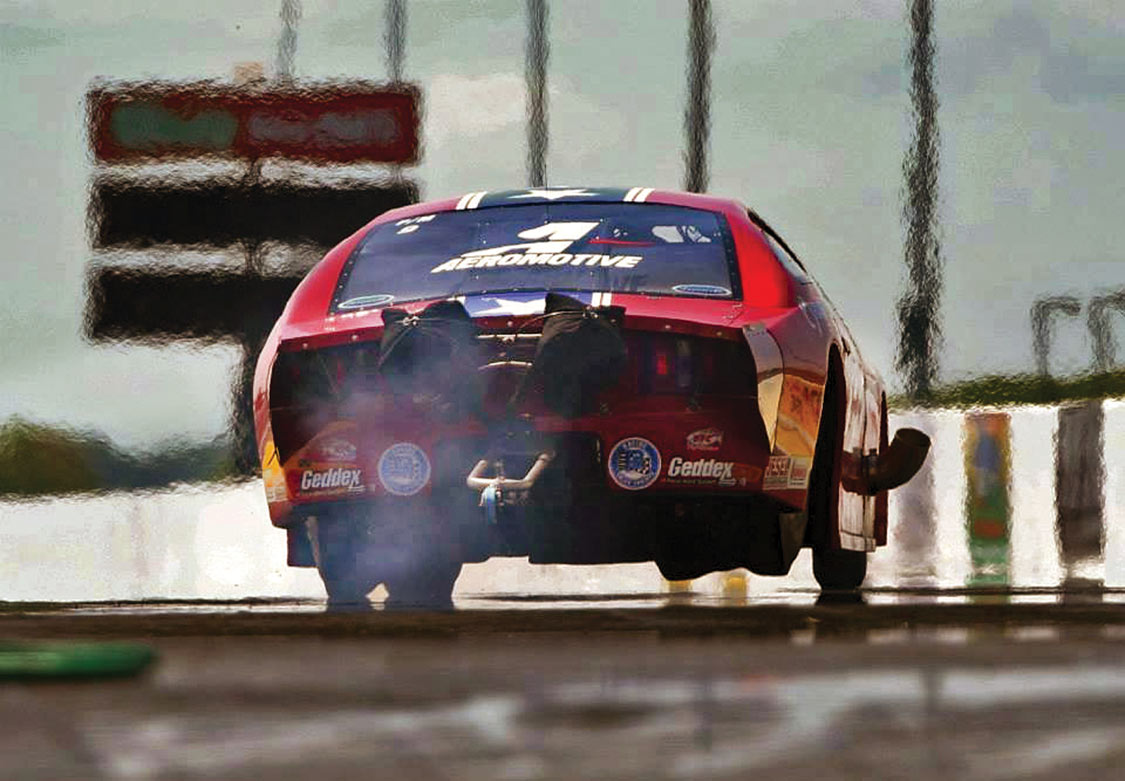
In my heyday, to delIver the perfect drag racing run we raced a very fine line,” asserts Don Garlits. “If you had the exact right size tire for the weight of the vehicle, and the clutch set exactly right for the horsepower of the vehicle, and a track surface compatible with the combination, you could make a perfect run. But if the tire was too big it would shake. If the tire was too small it would spin. If the clutch was set too tight, it could shake. If the clutch was set too loose, it would over-rev the engine. If engine power was excessive it would spin the tires. If engine power was insufficient it would shake the tires. If the vehicle was too light it would spin the tires. If it was too heavy it would shake the tires.”
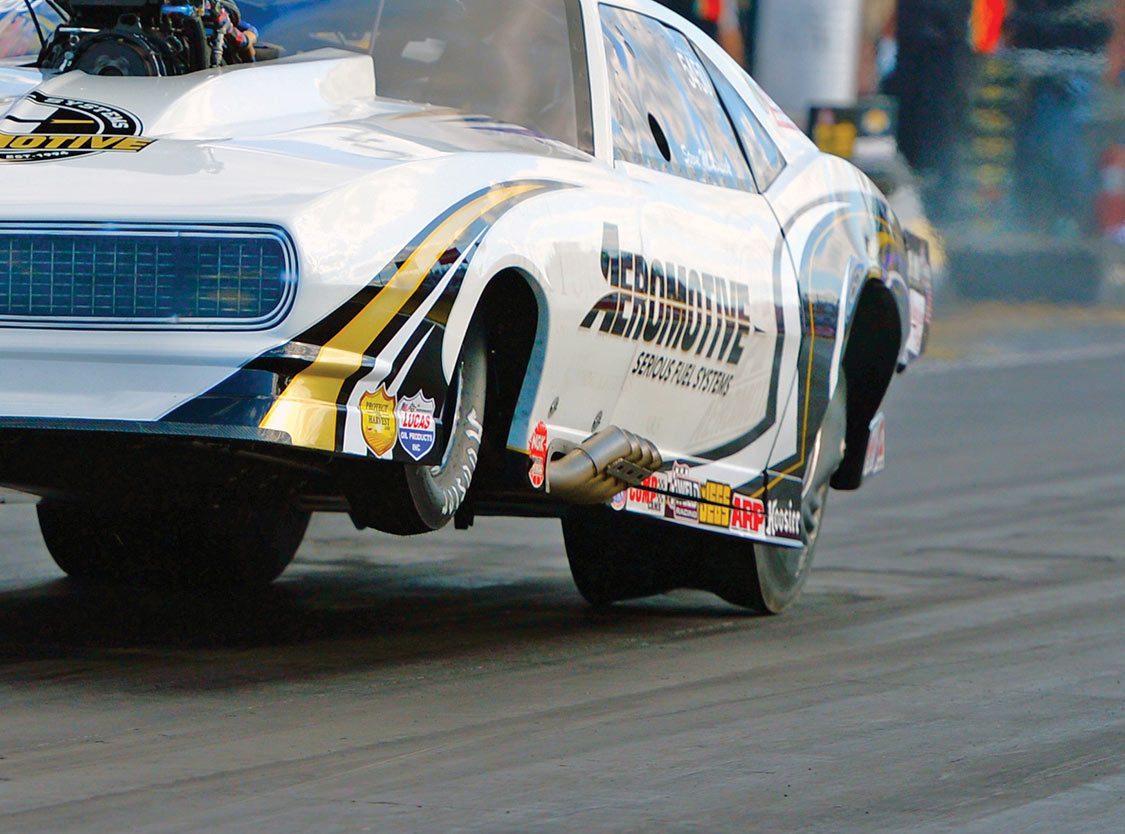
What would happen if there was a little more wheel speed than ground speed?
“A tiny bit of tire spin used to be okay. In my day, we had access to 3,500 to 4,000 horsepower, but today, if you go out and spin the tires, you lose the race. Back then it was okay to see a little puff of blue at about 300 or 400 feet because you knew the clutch had locked up and that little bit of blue told you the tires had caught up with you, and you were now one to one. On this formula, the 392 engine worked the best. When we saw it pop a little blue out there at 400 or 500 feet that son-of-a-gun was on song!”
Where was the effect of tire shake most prominent?
“The shake took place just off the starting line. The car might have been trying to get up on the tire, but didn’t have enough power to do it because the tire was too big for the prevailing horsepower, and the clutch was a little too aggressive. Had the clutch been a little bit looser, or if a little more horsepower were available, or had we used a little smaller tire, it wouldn’t have shook. Today, with computer-aided data, it seems closer to becoming an exact science.”
According to Don Prudhomme, “The biggest thing I learned when computers entered the racing scene was how detrimental a slight loss in engine speed could be. Usually due to over-aggressive clutch clamping action, even a slight decline in engine speed of 200 or 300 revs had an adverse effect. It was imperative to keep the revs up or the tire would likely walk over itself.
“In today’s racing, the engine seldom goes one to one with the tire, and if it does, it’s down near the finish line. The tires spin for the entire quarter-mile distance, but it’s a controlled spin. If the track surface is clean, you can see the marks of evidence all the way. If it doesn’t have enough spin, it will shake the tires.”
You might conclude that tire shake in drag racing has been a constant threat, but not so. “When the sport first started,” insists Tom “Mongoo$e” McEwen, “both the race tracks and the tires were poor and tire shake was unknown. Everyone spun the tires and the clutches were either disengaged or engaged—they had no slippage. Using our throttle foot and the brake handle to control tire spin, we drove with as much finesse as we could. It was only when the tires and tracks improved that concerns with tire shake began to emerge.”
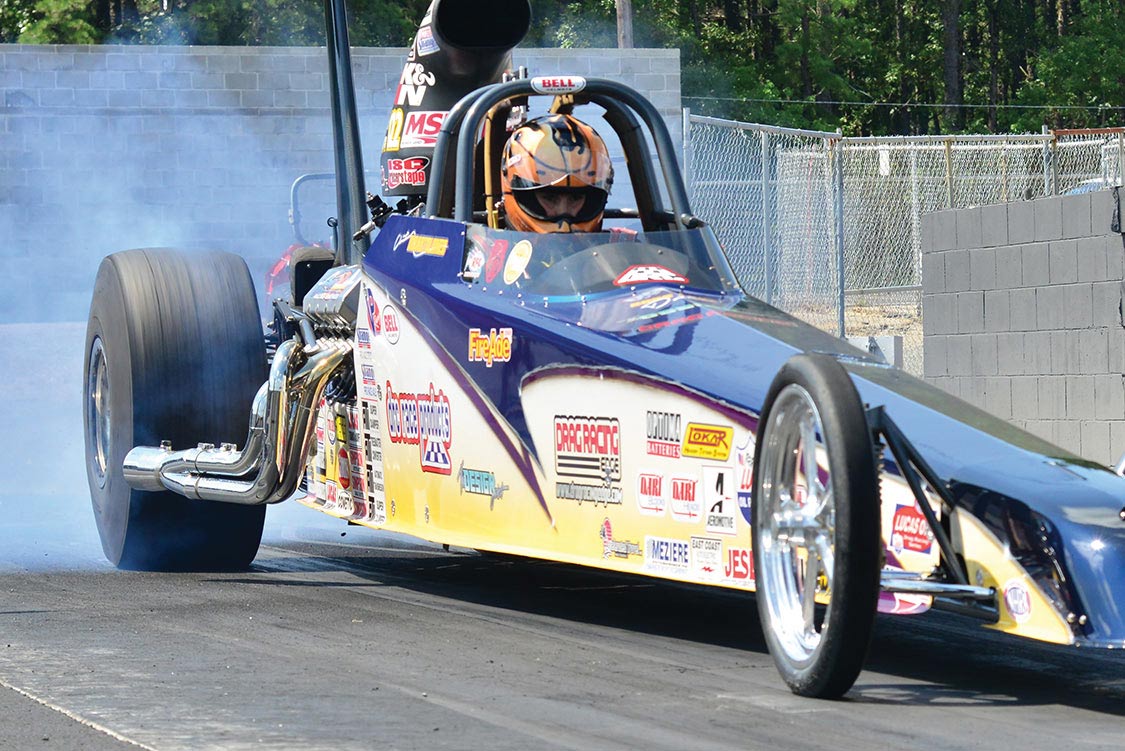
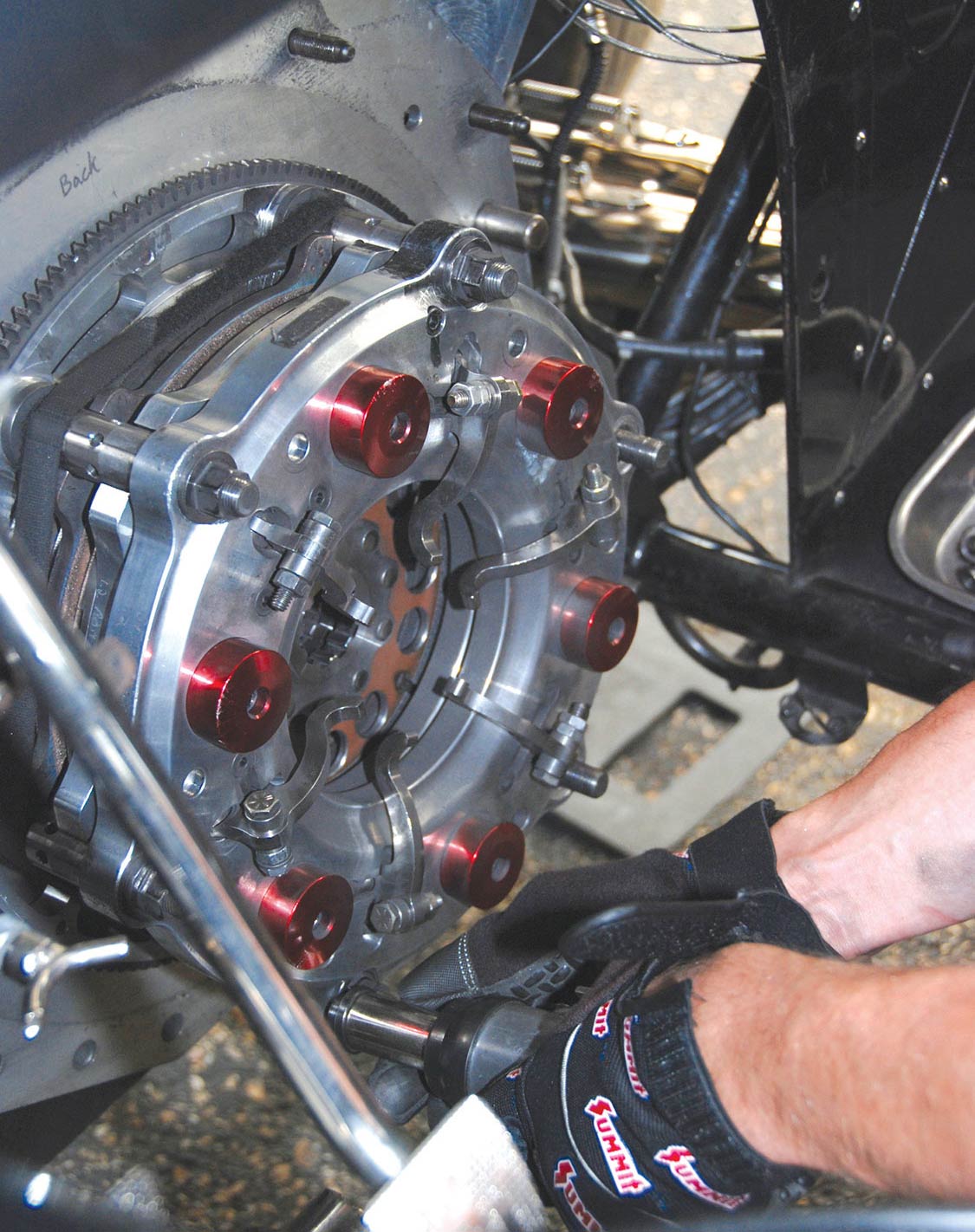
Curiously, traction control hasn’t yet evolved into the performance tool in drag racing that has made it so conspicuous in other motor racing disciplines. Think Moto GP, for example, where until the regulations changed at the end of 2015, racers released the clutch with fully open throttle, launched the bike and let the launch control program within the ECU smooth out everything else.
Austin Coil, the man most often attributed with impelling John Force to meteoric success, has lobbied the NHRA since around 2003 to adopt traction control. “Honestly, I still don’t understand why we can’t have it. It would save a lot of money for all participants, and it’s so easy to attain with modern electronics. I’m convinced beyond doubt it would produce better racing, but regrettably, our main sanctioning body is vehemently opposed to such closed-loop control systems.”
Coil goes on to say that most of his fuel-car crew chief colleagues ascertain driveshaft speed at one second after the car leaves the starting line. They plan their approach around this, usually subtracting 20 degrees of ignition lead for a mere tenth of a second to calm the car. “Now, let’s say you had access to a properly adjustable traction-control system, you would set the driveshaft speed to what you know would work for the conditions, and the computer would take care of it by modulating the clutch or ignition lead or brakes or whatever restrictive source you desire. If you wanted the driveshaft to turn at 2,800 rpm after one second, that’s exactly what you’d achieve, and the incidents of destructive tire shake would be greatly reduced.
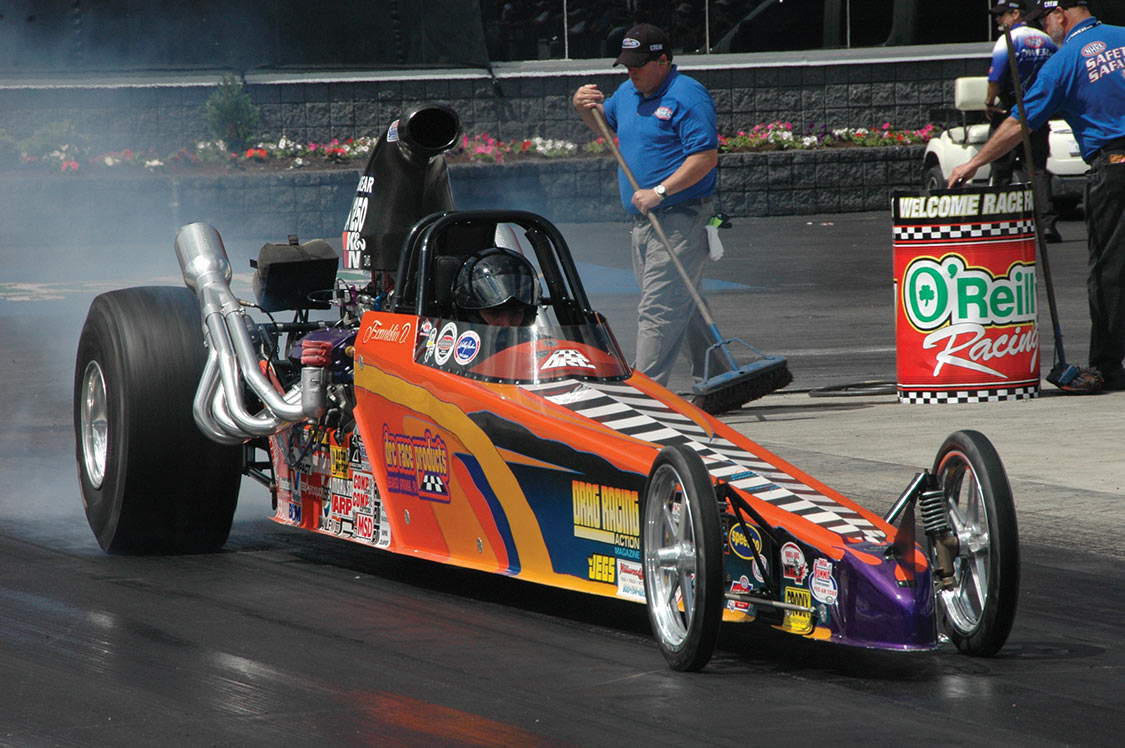
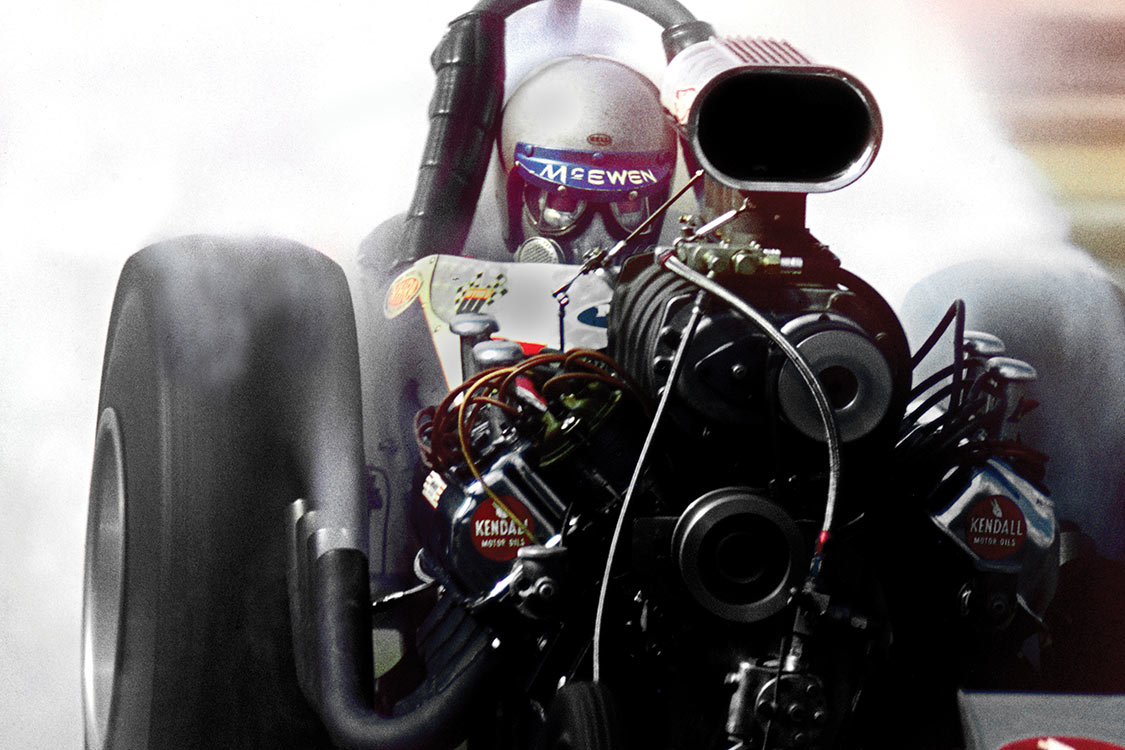
According to Coil, “Sometimes when you shake, it breaks the frame or the rear end. Sometimes it causes you to smoke the tires, over-rev the motor and blow the supercharger off. Often it results in a $20,000 expense. Adopting traction control is worthy of serious consideration.”
Likewise, from the Pro Stock and Pro Mod scene to the Saturday night racer, Ram Clutches’ Pat Norcia has been providing useful advice on how to avoid tire shake where possible for 30 years. Astute racers perceive the car as an entire package, which includes the tires, suspension, gearing (both transmission and rear end), and then decide how much clutch clamping force is required to propel the load forward.
Beyond the car’s necessities, track conditions have to be ascertained: the track temperature and atmospheric conditions—the air quality. The better these elements can be understood as a unit, the better the performance.
“Ideally, the tires should be operating in a controlled spin through first gear, says Norcia. “If the car starts off too slowly and the tire is glued to the race track, the centrifugal action of the clutch exerts control at high rpm, and because it has slipped too long and the car’s not moving sufficiently, tire shake is likely.
“Alternatively, if wheelie bars engage the track immediately and the tires spin out of control, usually they go into tire shake. But probably the most common cause of tire shake is excessive launch rpm, improper clutch clamping force or not enough first-gear ratio.”
A first-gear ratio that is too high numerically produces a mechanical advantage over the tire. For example, if you release the clutch pedal and the tires begin spinning and cannot gain traction—they cannot hook to the track—tire shake is the likely consequence. This event is easily recognized in the acquired data, which will show that the clutch locked and the car accelerated through first gear unusually quickly, in a time period that was too short.
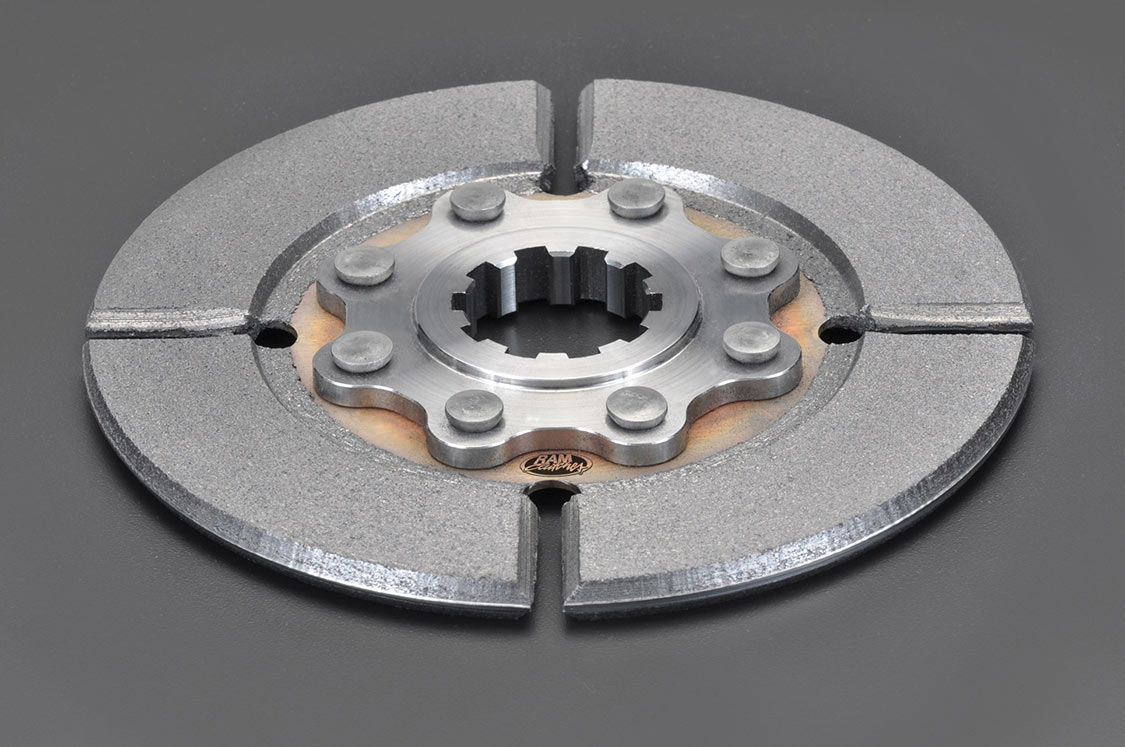
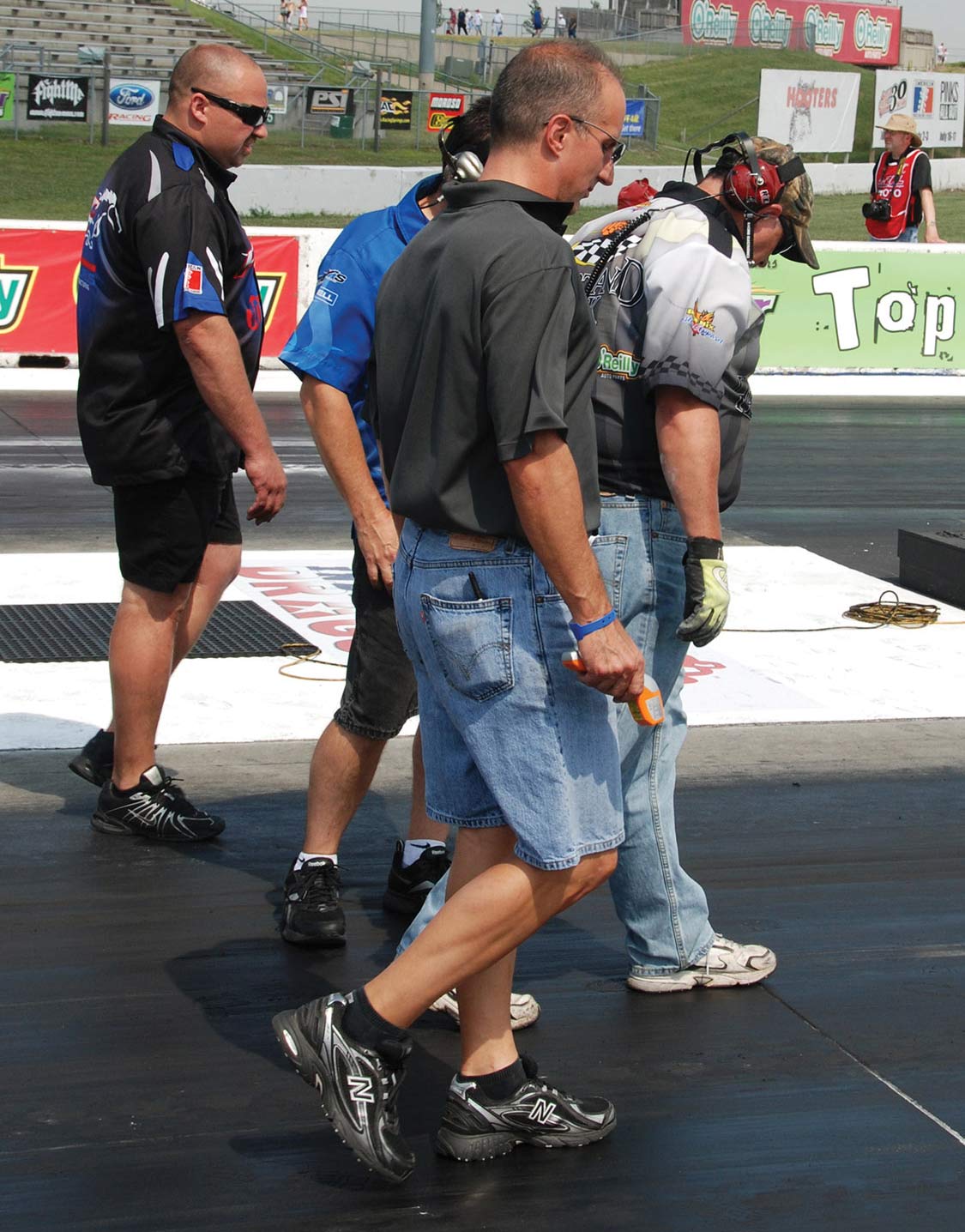
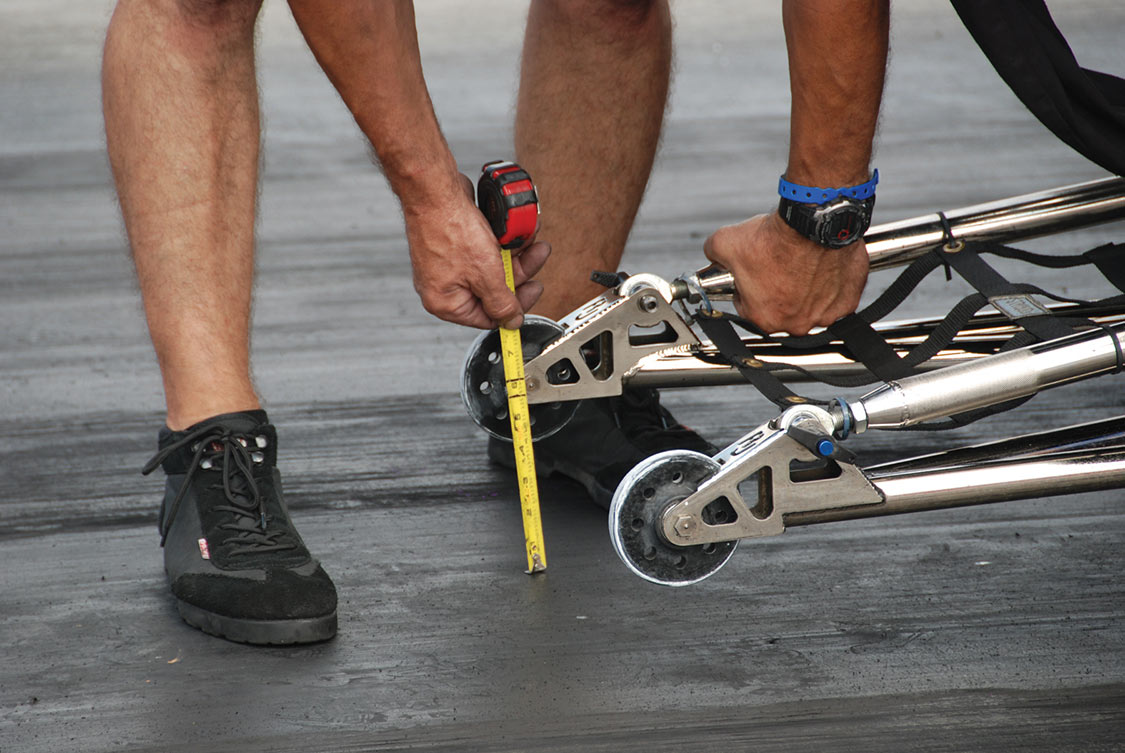
“Most crew chiefs know how long the car should spend in first gear, and they will tune the car with this in mind,” adds Norcia. “For example, a 2.40:1 first-gear ratio will require more clutch clamping force than say a 2.60. Conversely, if you were competing in poorer conditions, for example, at a higher altitude, like Las Vegas, a 2.70 or 2.75 gear might be used. In this case, as the first-gear ratio is lower [numerically higher] less clutch clamping force is required.”
Crew chiefs evaluate the track condition at the starting line. They ascertain the quality of the rubber on the line, the track temperature, and often they’ll take a grip meter reading. The better the reading on the grip meter, the better the traction will be. Then after the first run they will gather the data for validation, checking how it compares with their initial evaluation.
The 4-link dictates the way the chassis sets the rear tires on the track. Its differing layout helps promote or suppress tire spin. “If the track is in top condition and the traction is good, you can induce wheel spin by skillful 4-link adjustment. Conversely, if the track is mediocre, adopting a more downward angle of the lower bar can introduce a little more traction,” explains Norcia.
More traction can also be realized by using a wider spread (greater distance between top to bottom bar mounting centers) on the rear axle housing. Typically, the greater amount of horsepower available, the greater the spread of the 4-link.
Wheelstands are inefficient at launch in these classes, and successful racers use that energy to move forward. The front suspension stroke on modern drag cars is relatively short, often no more than 1 inch during upward travel. More importantly, the extension rate of the front shocks is very stiff, which slows the lift of the front end and aids in maintaining traction to the rear tires.
The enduring challenge in racing has always resided in finding a competitive tune, and the educational path can be a lot of fun, so are the prospects of winning.
Editor’s Note: A version of this article first appeared in the June 2017 print issue of the Drive Magazine.